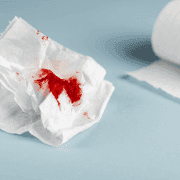A Guide to Laser Piles Treatment
In This Article
A Guide to Laser Piles Treatment
Rosmy
Updated on October 05, 2024
Medically verified by Dr. Arya
Fact checked by Dr. Fazeela

Proctology
5 min read
Unlike traditional surgery, laser treatment uses focused light energy to shrink or remove piles with minimal pain and a faster recovery time.
In this blog, Mykare Health will walk you through everything you need to know about the procedure, including how it works, its benefits, recovery process, and whether it's the right option for you.
What Is Laser Treatment for Piles?
Laser haemorrhoidectomy also known as haemorrhoid laser treatment is a relatively new surgical approach that aims at least at pain and complications of haemorrhoids.
The expenses inclusive of this treatment depends on factors such as; geographical region, the ranking of the facility and the type of disease. However, what has been found out is that a number of patients end up benefiting from the treatments and research in equal measure with the expenses incurred.
This is one of the most effective techniques that involves using a LASER device whose characteristic is that it emits strong light that can effectively act on the problematic tissue.
Depending on whether the high intensity light is used to vaporise or coagulate the haemorrhoidal tissue, the procedure shrinks the size of the haemorrhoids and offers lots of relief to the patients.
How is Laser Surgery for piles done?
Laser haemorrhoid surgery is an operation that takes 20- 30 minutes and does not require even cutting of the skin. Key steps include
- Anaesthesia: When patients require comfort they are given anaesthesia while they do not sleep.
- Positioning: Also, the patients lay flat, with their legs bent in consideration of lithotomy position for easy access.
- Proctoscopy: A tube finds blood vessels feeding haemorrhoids.
- Laser Treatment: These vessels are damaged by laser fibres.
- Shrinkage: The haemorrhoids become smaller in size over about six weeks and decrease to 60-80 percent of their initial size.
How does it work?
The laser energy is directed onto a hemorrhoid and that leads to its reduction in size and then, falling off. The laser also helps in the healing process and does not allow the formation of other keloids.
Laser piles treatment is non traditional method of piles treatment like other treatments it has certain benefits which are listed as following:
- Minimally invasive and painless
- In many cases, the procedure is exceptionally short, ranging from 20 to 30 minutes.
- The wound is not bleeding and one does not have to suture, it will heal by itself.
- The other advantage is that it has a fast recovery time, which should take not more than 2 days.
- High success rate
- Reduced risk of recurrence
Laser piles treatment more specifically Laser Piling is of the following types
1. Laser Hemorrhoidoplasty (LHP)
2. Laser Coagulation
3.Laser Photocoagulation
 5 min read
5 min readDon't Ignore Bummy Pain: Could It Be Piles?
 7 min read
7 min readBlood In The Stool: A Sign You Shouldn’t Ignore
 6 min read
6 min readSitting All Day Wreaking Havoc? It Might Be Piles!
Get a Callback Now
Preparation and Procedure
1. Initial consultation and examination
2. Cleansing (bowel preparation, antibiotics, etc. )
3. I laser coagulation (use of laser energy to haemorrhoids)
4. This includes post-procedure care which includes resting among others.
Aftercare and Recovery
In-hospital Recovery
Following surgery, hospitals then have recovery care- pathways that have to be observed until the patient is discharged. Key aspects include
- Anaesthesia Recovery: The patients develop sedative effects for roughly 4 to 6 hours after the piles laser surgery. There are concerns that need to be prevented hence healthcare Vitals signs are checked by healthcare professionals. Some people experience nausea, or disorientation which tends to disappear with time.
- Symptom Management: Indeed the use of pain relieving medications is recommended after the laser haemorrhoidectomy surgery. Bleeding and discomfort occur frequently, often resolving in average 2 weeks of time. See your doctor if the symptoms do not disappear.
- Discharge: It is discharged if the patient has normal bowel sounds and is passing gas as well as urine normally. Wear free clothing and organise for transport for ease to the body.
- At-home Recovery: Laser haemorrhoid surgery is accomplished by surgeons, however, the patients themselves also have a vital part to play, post-operation. Over the typical 2–4 weeks of recovery.
- Stool Softeners: Take the following prescribed laxative products without pain for bowel movements; Isabgol husk and Triphala for best results.
- Diet: There is progressive increase with fibre consumption from fruits and vegetables as well as whole grain foods. It is advisable to begin with tasteless foods for instance rice, bananas and crackers and ensure that you drink a lot of water.
- Hygiene: Wash the area with soap and warm water, do not rub: avoid using exasperation or substances which are abrasive.
- Sitz Bath: Syndrome's onset may be managed by sitting in water for 10-15 min, 2-3 times a day to minimise the swelling and discomfort.
Kegel Exercises: Exercise the lower limbs and enhance blood circulation by walking to get rid of discomfort and help the healing process; do Kegel exercises to strengthen pelvic muscles.
Risks and Complications
- Mild discomfort or pain
- Bleeding or haemorrhage (rare)
- Infection (rare)
- Recurrence (rare)
Laser Piles Treatment is one more option to treat haemorrhoids which is safe, effective and does not require any invasive measures at all. Haemorrhoids pain and discomfort can be alarming which is why you need to see your doctor or a proctologist and find out if laser is appropriate for you
Minimally Invasive and Painless: Laser piles treatment does not actually involve cutting off the skin and hence there is no severe feeling of pain and since the treatment is fast the period of recovery is also short.
Quick Procedure: It usually takes approximately 20-30 minutes and it usually is done on an outpatient basis.
Fast Recovery: It is characterised by a high success rate with low probability of recurrence and patients can go about their normal activity the following 1-2 days.
Effective Hemorrhoid Shrinkage: The laser energy reduces the size of the haemorrhoids over six weeks and the size reduces by 60-80 % of their original size.
Low Risk of Complications: Compared to other methods of treating haemorrhoids, this method has fewer side effects such as bleeding, infections and recurrence.
Source Links
Pristyn care
Rg stone hospital



